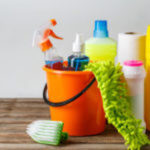Thousands of children and infants need medical care for poisoning from products commonly found in and around the home. Although the long-term injury is rare, the anxiety and distress caused to both child and parents could be avoided by increased awareness.
Remember, this type of poisoning can happen to anyone, no matter what age they are. It is also good to remember that sometimes the poisoning of a person may have been deliberate, either by someone else or by themselves.
The group of children most at risk are the under-fives and of these children, aged one to three are at the most risk. There are, on average, 15 children under 5 years old admitted to the hospital daily in the UK due to sudden poisoning. Children from poorer families are three times more likely to be admitted to hospital due to an accident, including accidental poisoning.
Why are young children more likely to be poisoned?
Exploring and curiosity are both parts of growing up but young children have little concept of potential dangers. They are inquisitive and will often put things in their mouths to further explore their texture and taste. Part of growing up is to watch and copy what others do. Also, small children may mistake liquid capsule-style dishwasher and washing machine detergents for toys or sweets. These are not only a danger in relation to ingestion but can also cause serious irritation to the eyes which can result in long-term damage.
Serious Poisoning Symptoms
- Nausea
- Vomiting
- Abdominal pain
- Drowsiness
- Reduced levels of consciousness
- Breathing difficulties
- Seizure
Course of Action
- Get medical help immediately
- Do not let the child drink anything
- Do not make the child sick – this can cause more damage.
- If you know what has been taken, keep a sample to show to the medical services
- Try to wake them if they are unconscious.
- Encourage them to spit out any pills, tablets or powder.
- If a child’s lips are burned by corrosive substances, frequent small sips of cold water or milk may be given
- And finally, residual chemicals on the skin should be rinsed away with copious amounts of water
When Medical Help Arrives
Medical staff will need to take a detailed history to effectively treat a person who has been poisoned. When the paramedics arrive or when you arrive at an emergency department, give them as much information as you can including:
- What substances you think the person may have swallowed
- When the substance was taken (how long ago)
- Why the substance was taken – whether it was an accident or deliberate
- How it was taken (for example, swallowed)
- How much was taken (if you know)
- Give details of any symptoms that the person has had, such as whether they have been sick.
Prevention
- Closely supervise children in and around the home
- Keep household chemicals out of sight and reach of children, preferably in a locked cupboard. Remember this also applies to the garage and shed
- Always store household cleaning chemicals in their original containers
- Replace lids and put all products away immediately after use
- Dispose of unwanted household cleaning products safely
- Store household cleaning products in a different place from food and medicine
- Use household cleaning products according to label directions – i.e. in the proper way
- Never abuse substances such as household cleaning products
For more information on training courses, visit our “Courses” page which also includes our First Responder and First Person on Scene (FPOS) Courses.

